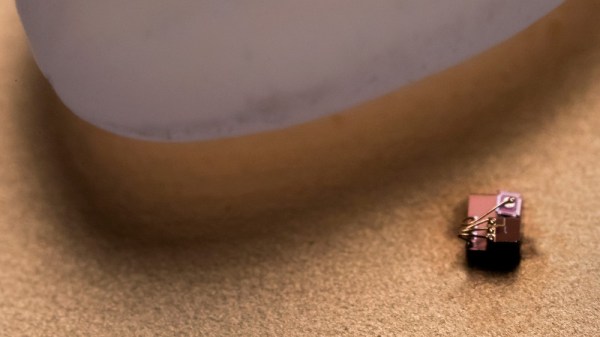How small could you make a computer? In a way, that’s a question that requires that a computer be defined, because you could measure the smallest computer simply in terms of the smallest area of silicon required to create a microprocessor. So perhaps it’s better to talk about a smallest working computer. Recent entries in the race for the smallest machine have defined a computer as a complete computer system which holds onto its program and data upon power-down, but this remains one that is hotly debated. You might for instance debate as to whether that definition would exclude machines such as the crop of 1980s home computers that didn’t store their programs and data, was your Sinclair Spectrum not a computer?
At the University of Michigan they have opted for the simpler definition with their latest entry in the race to be the tiniest. Their latest machine packs an ARM Cortex M0 into a 0.3mm cube, along with photoreceptors and LEDs for programming, data throughput, and power. It is designed to be a temperature sensor and logger for medical implantation, but it stands more as a demonstration of technological prowess than as a usable product.
Pictures of a tiny computer “dwarfed by a grain of rice” make for good mass media consumption but where’s the relevance for us? The interesting part comes from the tantalizing glimpse of its construction: this is a hybrid device upon which we can see the optoelectronic components have been wire-bonded. Unfortunately the paper, catchily titled “A 0.04mm3 16nW Wireless and Batteryless Sensor System with Integrated Cortex-M0+ Processor and Optical Communication for Cellular Temperature Measurement” does not appear to be free-to-view online, so we don’t have any more information. We wish that such feats were possible within our community, but suspect those days are still pretty far away.










